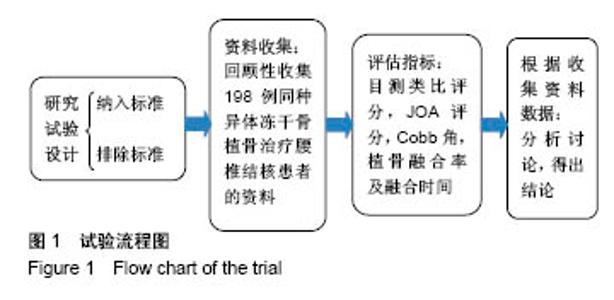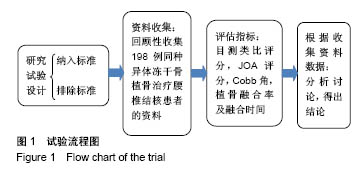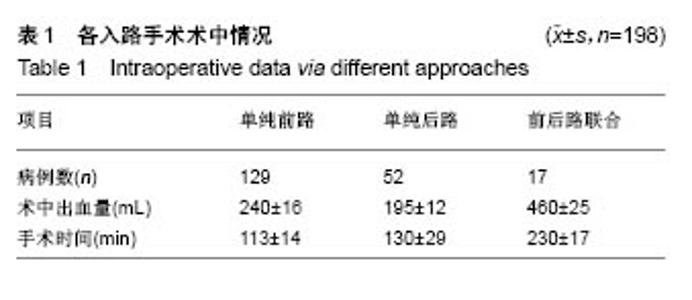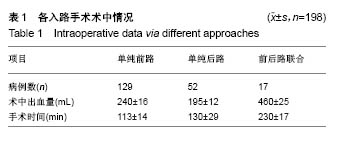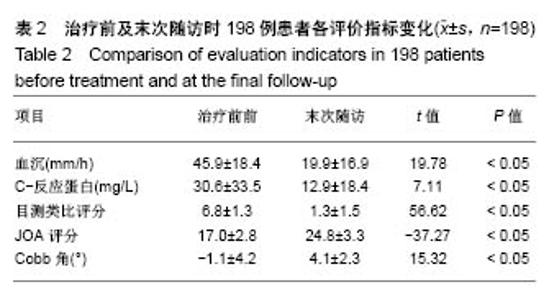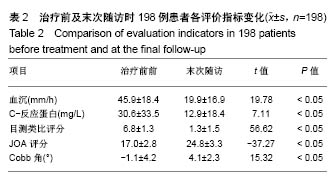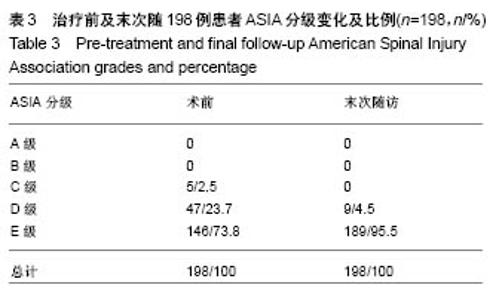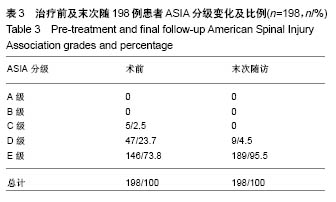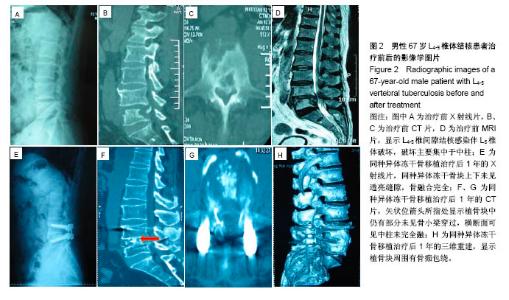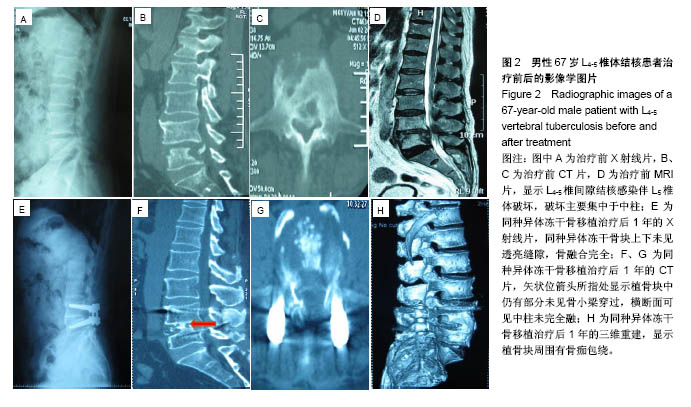| [1] Talu U,Gogus A,Ozturk C,et al.The role of posterior instrumentation and fusion after anterior radical debridement and fusion in the surgical treatment of spinal tuberculosis: experience of 127 cases.J Spinal Disord Tech. 2006;19(8): 554-559.[2] Soares Do Brito J,Tirado A,Fernandes P.Surgical treatment of spinal tuberculosis complicated with extensive abscess.Iowa Orthop J.2014;34:129-136.[3] 邓强,帕尔哈提•热西提,张亚楼,等.胸腰椎结核伴重度后凸畸形:矫形内固定与植骨融合后的脊柱稳定性[J].中国组织工程研究, 2015,19(53):8567-8572.[4] 何清义,周强,卢宏伟,等.儿童胸腰椎结核手术治疗的效果及并发症分析[J].中国脊柱脊髓杂志,2015,25(9):820-825.[5] Skeppholm M,Olerud C.Pain from donor site after anterior cervical fusion with bone graft: a prospective randomized study with 12 months of follow-up. Eur Spine J. 2013;22(1): 142-147.[6] Mei G,Luo F,Zhang Z,et al.Treatment Experiences and Management Outcomes for Skipped Multisegmental Spinal Tuberculosis.Orthopedics.2016;39(1):el9-25. [7] Liu P,Zhu Q,Jiang J.Distribution of three antituberculous drugs and their metabolites in different parts of pathological vertebrae with spinal tuberculosis.Spine(Phila Pa 1976). 2011;36(20):E1290-1295. [8] Zhang P,Shen Y,Ding WY,et al.The role of surgical timing in the treatment of thoracic and lumbar spinal tuberculosis.Arch Orthop Trauma Surg.2014;134(2):167-172.[9] Shi J,Tang X,Xu Y,et al.Single-stage internal fixation for thoracolumbar spinal tuberculosis using 4 different surgical approaches.J Spinal Disord Tech. 2014;27(7):247-257.[10] 洪海森,郭林新,洪加源,等.一期后路病灶清除植骨融合内固定术治疗胸腰椎结核[J].中国骨与关节损伤杂志, 2014,29(5): 491-492[11] 王自立,施建党.胸、腰椎脊柱结核手术方式选择的基本问题[J].中华骨科杂志,2014,34(2):232-239.[12] Karaeminogullari O,Aydinli U,Ozerdemoglu R,et al. Tuberculosis of the lumbar spine: outcomes after combined treatment of two-drug therapy and surgery.Othopedics. 2007;30(1):55-59.[13] 李健,张振山,杨波,等.腰椎后路椎弓根钉置入并自体颗粒骨打压植骨治疗下腰椎结核[J].中国组织工程研究与临床康复, 2011, 15(39):7315-7318.[14] 廖烨晖,叶入裴,李广州,等.一期后前联合入路与单纯后路手术治疗下腰椎结核的疗效比较[J].中国修复重建外科杂志, 2017, 31(5):534-540.[15] Giannoudis PV,Dinopoulos H,Tsiridis E.Bone substitutes: an update.Injury.2005;36 Suppl 3:S20-27.[16] Grabowski G,Cornett CA.Bone graft and bone graft substitutes in spine surgery: current concepts and controversies.J Am Acad Orthop Surg.2013;21(1):51-60.[17] Calori GM,Mazza E,Colombo M,Ripamonti C.The use of bone-graft substi-tutes in large bone defects: any specific needs?Injury.2011;42 Suppl 2:S56-S63.[18] 赵庆凯,汤逊,徐永清,等.半椎板切除减压植骨融合内固定治疗腰椎结核[J].中国矫形外科杂志,2015,23(11):976-980.[19] 王锡阳,罗承科,邓强,等.同种异体骨与自体骨植骨治疗胸腰段结核的研究[J].中国矫形外科杂志,2012,20(9):782-785.[20] 郝定均,温世明,何思敏,等.前路一期病灶清除植骨内固定治疗胸腰椎结核的疗效观察[J].中国脊柱脊髓杂志,2003,13(11):8-11.[21] 施建党,王自立,王沛,等.同种异体骨与自体骨在颈椎结核植骨融合中的应用比较[J].中国修复重建外科杂志, 2011,25(11): 1290-1293.[22] 买尔旦•买买提,任龙龙,田娟,等.前路病灶清除同种异体冻干骨植入内固定治疗小儿脊柱结核[J].中国组织工程研究, 2012, 16(29): 5485-5488.[23] Boachie-Adjei O,Squillante RG.Tuberculosis of the spine.The Orthop Clin North Am.1996;27(1):95-103.[24] Ha KY,Chung YG,Ryoo SJ.Adherence and biofilm formation of Staphylococcus epidermidis and Mycobacterium tuberculosis on various spinal implants.Spine(Phila Pa 1976). 2005;30(1):38-43. |
